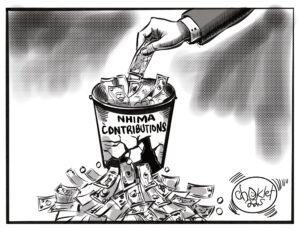Zanaco Plc economist Dr Patrick Chileshe has predicted that negative factors, including sliding copper prices, rising crude oil prices and a rise in inflation rate will dampen the country’s economic growth in the second half of this year.
But Dr Chileshe says the current rise in Non-Traditional Exports (NTEs) implies that Zambia is slowly diversifying from dependence on copper, a development he observed should be encouraged.
Speaking during a keynote presentation at Zanaco’s 2018 Mid-Year Economic Review and Outlook Breakfast meeting, Tuesday, Dr Chileshe forecast that negative factors, including sliding copper prices, rising crude oil prices and a rise in inflation rate will slow down the country’s economic growth in the second half of this year.
“We [Zambia] are not going to make as much [economic] growth as we did last year because there are many factors that may hinder our growth this year compared to the previous one. Global growth is consequently going to negatively affect commodity prices, which are our major exports. The other risk we are seeing is that this year what we have observed is that, crude oil prices have been rising very fast. And that might cause the cost of production to actually go up in our manufacturing sector, in the transport sector, and that is going to hurt growth. And one major risk I have not pointed out here is that, copper prices have actually started sliding down. Since the start of the year, copper prices have fallen from about US $6,800 per tonne, to about US $6,200, and copper being our major economic activity that propels a much bigger picture going ahead, we are affected going ahead,” Dr Chileshe said at the Taj Pamodzi Hotel.
“The other thing is tightening financial conditions, especially at the global level. And usually people would ask, ‘how does this affect us?’ This is likely to affect us in a lot of channels and some of these channels include the exchange rates. Because the tightening of financial conditions is going to affect the flows of capital into emerging economies such as Zambia and that is going to bring a depreciation of the local currency; that is going to make the cost of production, especially our manufacturing sector, a little bit higher. Convectional economies usually tell us that depreciation is good for your exports, but in our environment here, much of our producers and manufacturing entities import quite a lot of their intermediate goods and, therefore, a depreciation is likely to hurt growth.”
He said the country is paying more towards external transfer of services, which had affected the balance of payments, and would in-turn hinder the banking sector’s productivity.
“So, that is one thing that we need to take into account. Then what we also saw is that, in the first quarter of this year, the country continued to have a deficit in balance of payments. Basically, the country is paying more for consumption of services from external parties than we are receiving for our services to other parties across the world,” he said.
He also predicted that inflation would in the long-run soar because of the poor harvest that Zambia had recorded during the 2017/2018 farming season.
“Inflation developments for the first half of this year are on the upward. What we have seen is that inflation jumped up last month. We have just heard that inflation has gone to 7.8 per cent in July, according to the figures that were released. And a key driver of inflation in 2018 has actually been food inflation and that is a worrying side because during this period, inflation tends to slow down in the post-harvest period, but what we have seen is that inflation is actually been driven by rising food prices. And that could actually tell us that going forward; inflation is actually going to keep going up especially if the currency depreciates even further. We are projecting inflation to average at about 7.3 per cent in the third quarter of this year, but we later expect it to pick up in the fourth quarter of 2018 and then continue rising up to around 8.5 per cent in the third quarter of 2019,” Dr Chileshe added.
“On Monetary Policy and interest rate; what we have seen is that, after the central bank eased the Monetary Policy in around February, the central bank has decided to keep Monetary Policy at the same level, indicating that the central bank [is] seeing the future inflation to be relatively stable, but I believe that at the next Monetary Policy meeting, this outlook may be revised upwards because what we are seeing is that inflationary pressures are rising and the central bank is likely to start incorporating new information than they had actually previously seen,” he narrated.
But Dr Chileshe noted that the current rise in NTEs implies that Zambia is slowly diversifying from dependence on copper, a development he observed should be encouraged.
“But what we need to also see is that, since the third quarter of 2018, our Non-Traditional Exports (NTEs) are actually picking up, which is a good thing because that is telling us that the economy is gradually diversifying away from our dependence on copper. That is something that we need as a country to work on,” said Dr Chileshe.























